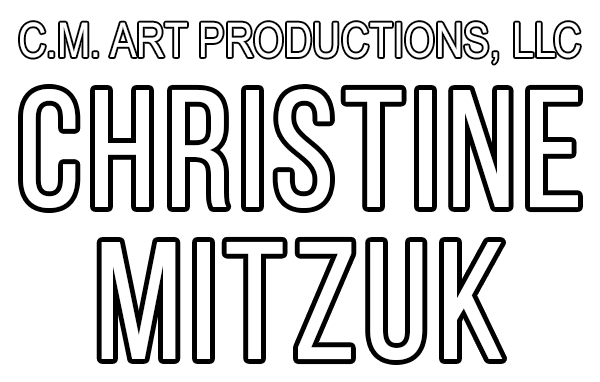Bear Falls is my second attempt at this concept. I’ll show some of the process I used to create it.
First Attempt

Some of you may remember the first attempt. At the time I thought it was pretty good. It mostly met my goals for the idea with the skill set I had available in 2002. Mostly but not quite.
Second Attempt

The more I learned, the more I wanted to revisit the idea. Through many thumbnail sketches I eventually realized I still wanted to make the landscape the star, but I really wanted to people the world. I borrowed the idea from early landscape painters of using a teeny figure to play up the power of the land. Thanks to some peer feedback, the figure got even smaller (which helped). This time around, I also played more with distance and depth.
I also used more of my senses. What would it feel like to be that tiny figure at the head of the falls? Rushing wind. Roaring water. The wind whipping my hair and skirt. Spray from the falls hitting my skin. The call of the birds barely audible over the falls.
This newer version has much more of the feeling I was aiming for.
Maquette Building
A maquette was very helpful. I needed something to look at to figure out the lighting. Plus building it with my hands seemed to help in thinking about the space.
Step 1
I made a cardboard form for the overall falls shape. Then I sculpted the bear heads. I made my own modeling clay. There a many recipes online. It worked pretty well, but gravity distorted some of the heads. It did give me some interesting texture because of the salt. Next time I’ll probably use Sculpey or similar.
When the bears were dry I baked the whole thing in the oven at the lowest temperature possible. Kids don’t try this at home.
 Step 2
Step 2
To give the falls and land some volume, I built up the forms with paper mâché.
 Step 3
Step 3
To create whitecaps and add dimension to the water, I used a palette knife and applied some Acrylic Modeling Paste & Acrylic Extender. I painted everything with acrylic paint. Then to give the painted water surface a more reflective quality, I coated it with some Acrylic Gloss Gel. After the paint dried I added the little castle shapes (see the image with step 4).


Step 4

To give me a better idea of falling water shapes, I built up layers of caulk. I used DAP Clear and DAP Crystal Clear. To give it a frothy look and make it look a little more like sheets of water in some areas I moved the caulk around with a toothpick. For several days the maquette had to sit out in the porch with the windows open because the caulk was quite smelly.
When the caulk was dry I added a little white paint to some of the frothy water areas.
Including a maquette in the process of creating the painting did add extra hours but I think it was worth it. I definitely got shadow and form information from it that I could not have made up well.
I’ve learned a lot since that first attempt thanks to The Atelier Studio Program of Fine Art, Rebecca Guay’s IlIllustration Master Class, SmArtSchool, and my peers. I’m grateful for these opportunities and am excited to see what else I’ll learn. Art on!

